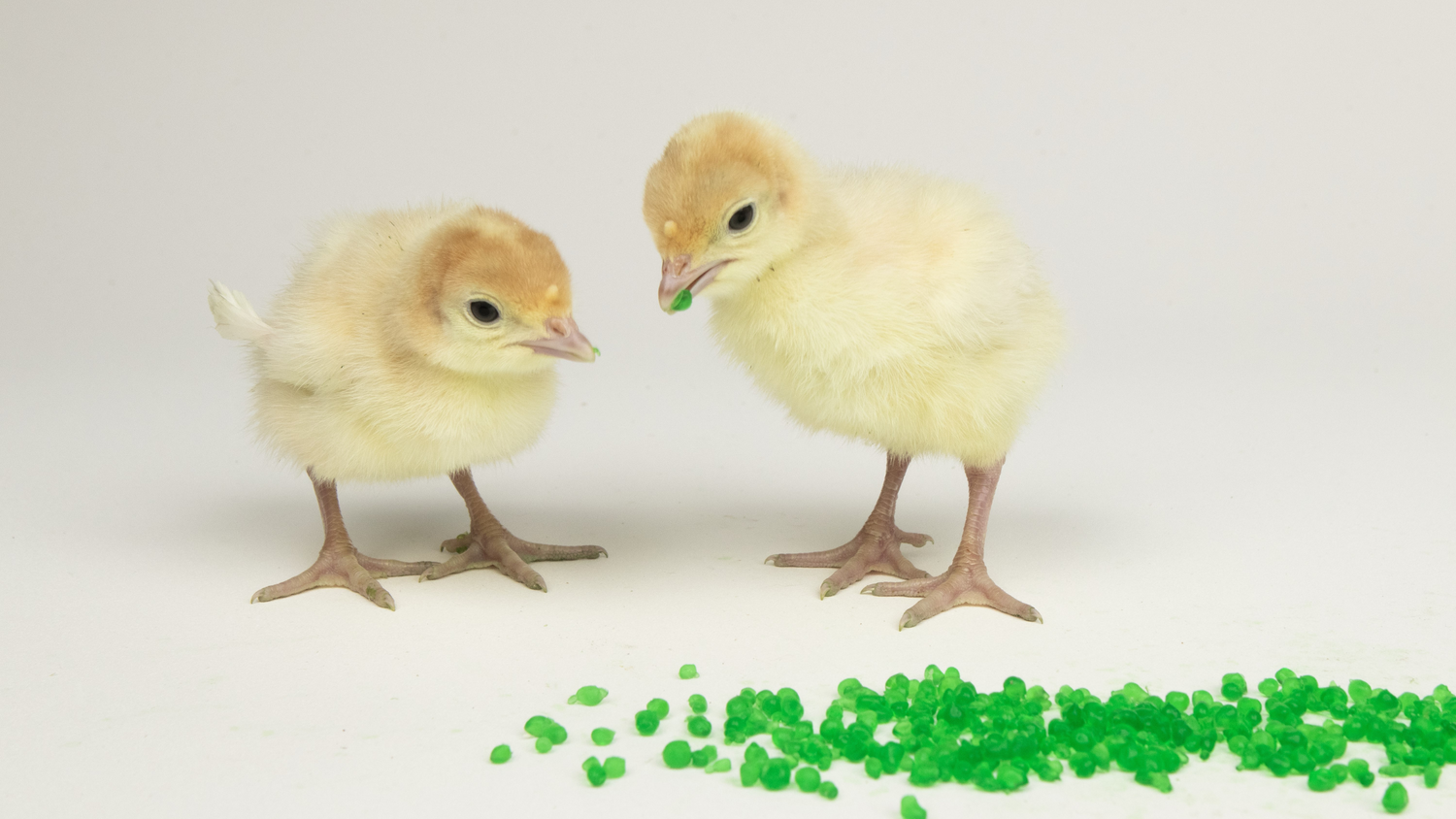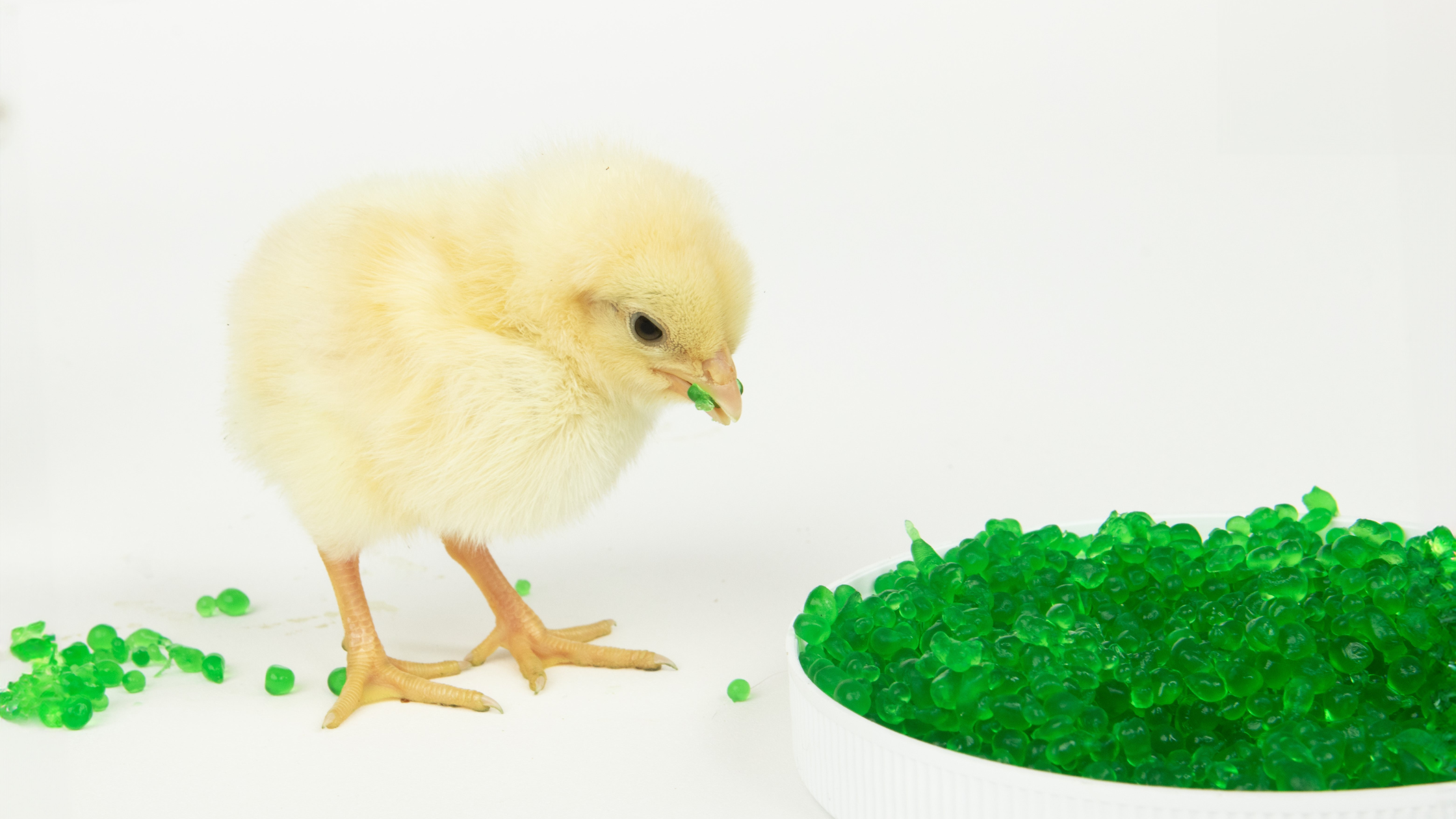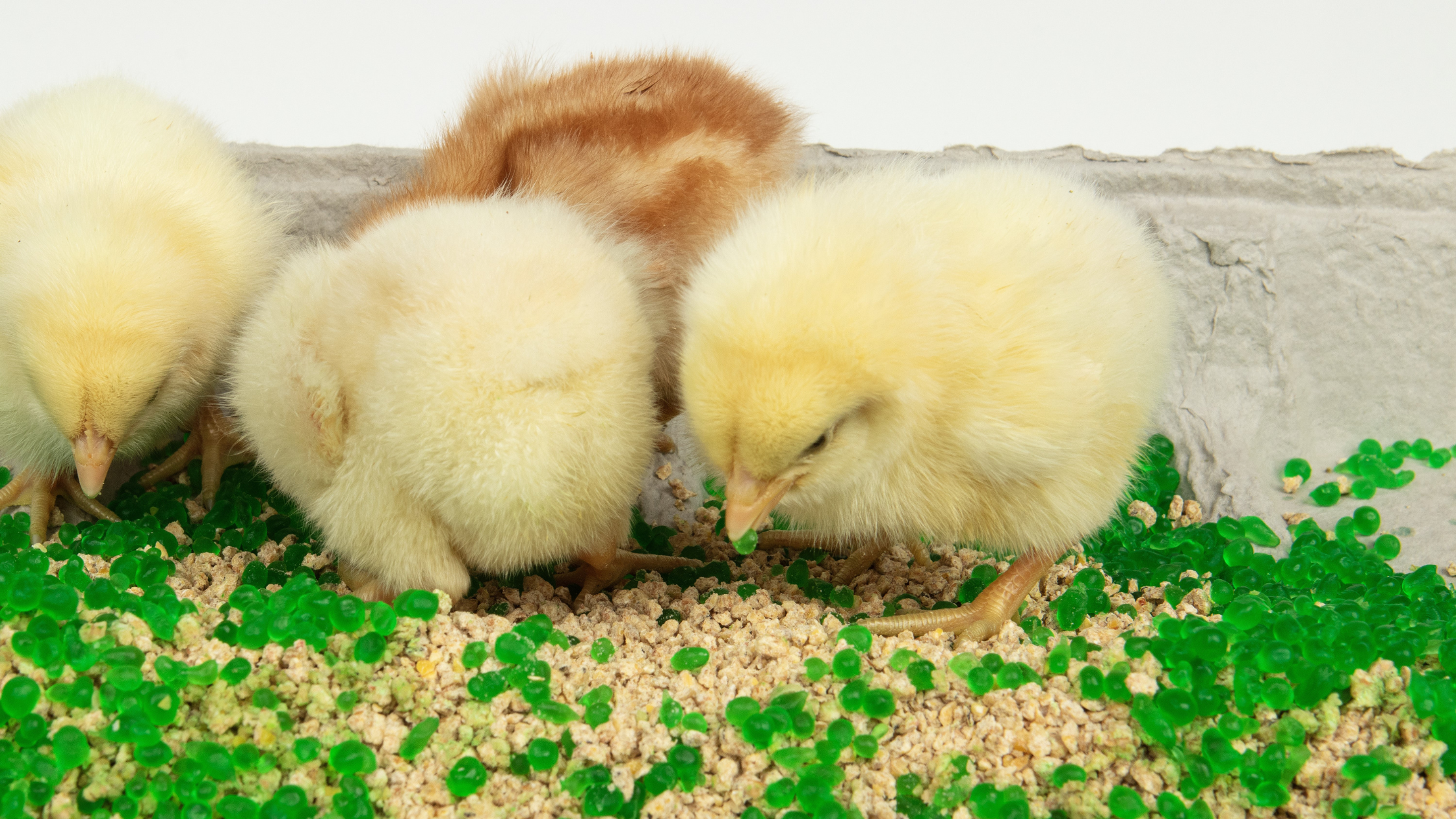Background
The sooner hatchlings discover and start consuming feed and water at placement, the quicker their digestive and immune systems will develop and provide a foundation for strong growth. AquaBeads® by ClearH2O, Inc. are high-moisture gel beads enhanced with electrolytes and betaine to provide hydration supplementation and act as a feed-attractant for poults when used as a top-dressing at time of placement. As outlined in the following study, AquaBeads® are also an effective delivery device for the administration of vaccines such as the coccidiosis vaccine to poults.
Experimental Design
At day of placement, 200 turkey poult hens were randomly allocated to one of three treatment groups: 1) a non-vaccinated, non-treated control that did not receive AquaBeads® or coccidiosis vaccination, 2) a group that only received the coccidiosis vaccination via oral gavage, 3) a group that received AquaBeads® at 0.5-1g/poult as a vehicle for administering the coccidiosis vaccination, or 4) a group that received AquaBeads® at 1-1.5g/poult as a vehicle for administering the coccidiosis vaccination. Groups 2, 3, and 4 received the same 1x dose of coccidiosis vaccine per manufacturer’s provided application guidelines regardless of administration route. Poults were placed on fresh pine shavings in brooder rings for 1 hour until all AquaBeads® had been consumed by group 3 and 4 where the poults were then allocated to battery cages as outlined below. Each brooder ring had two feed flats with or without AquaBeads®. Total oocyst output was evaluated from d4-9 post-vaccination. The AquaBeads® product was stored in a new 5-gallon container and sealed. Prior to feed application, the beads were drained to remove excess water for 1-2 minutes and mixed with coccidiosis vaccine.
Experimental Groups
| Group | Treatment | Total n/treatment | Replicate cages/treatment | n/cage |
|---|---|---|---|---|
| 1 | Non-vaccinated | 50 | 5 | 10 |
| 2 | Vaccinated Control (oral) | 50 | 5 | 10 |
| 3 | Vaccinated + AquaBeads® ~0.5g/poult | 50 | 5 | 10 |
| 4 | Vaccinated + AquaBeads® ~1.5g/poult | 50 | 5 | 10 |
¹AquaBeads® were provided on top of feed flat as specified in the table above. Single application immediately prior to placement.
Experimental Timeline
On the day-of-hatch, poults were randomly allocated to one of the four treatment groups. All the poults from each treatment group were placed into a single brooder ring with treatment until all of the AquaBeads® had been consumed by Group 3 and Group 4 poults. Once the AquaBeads® had been consumed, n=10 poults per cage times 5 replicate cages and treatments were placed for the duration of the study.
Days 4 through 9 after the vaccination, the team collected all fecal material from each pen daily and added 2.5% potassium dichromate to determine total oocyst output. The volumetric basis for total oocyst output was evaluated rather than oocyst per gram to improve precision. With 20 total cages and 3 replicate counts per cage, the team facilitated 60 McMaster counts.
Results
Table 1 presents the outcomes of utilizing AquaBeads® as a delivery vehicle for live coccidiosis vaccines in turkey poults at placement, focusing on the total oocyst output for each treatment group. The statistical analysis aimed to identify significant differences among the groups.
| Treatment | Total Oocyst Output |
|---|---|
| Non-vaccinated | 0 ± 0ᶜ |
| Vaccinated Control (oral) | 475,666,667 ± 37,286,905ᵃ |
| Vaccinated + AquaBeads® ~0.5g/poult | 53,850,000 ± 7,414,178ᵇᶜ |
| Vaccinated + AquaBeads® ~1.5g/poult | 88,877,778 ± 14,792,948ᵇ |
| P-value | <0.0001 |
- ᵃ,ᵇ,ᶜ Superscripts denote significant differences across treatment groups within a column.
- Total oocyst output expressed as mean ± standard error.
- Statistical analysis with ANOVA (JMP Pro 16). Means further separated using Tukey HSD.
Results Summary
- Both groups that received AquaBeads® as a vehicle for administering the coccidiosis vaccine showed a presence of total oocyst output, similar to the vaccinated control group (oral).
- The nonvaccinated group showed no oocyst output.
- When comparing the two AquaBeads® groups, the group that received AquaBeads® at ~1.5g/poult exhibited a higher total oocyst output compared to the group with AquaBeads® at ~0.5g/poult. This suggests that the increase in AquaBeads® dosage led to a higher intake of the vaccine, as reflected by the higher oocyst outputs. Despite this difference, both AquaBeads® groups demonstrated oocyst outputs comparable to the oral vaccination group.
- The results suggest that AquaBeads® works effectively as a delivery vehicle for the vaccine, comparable to the traditional oral gavage method.

This research study was conducted at the University of Arkansas, Department of Poultry Science by Danielle Graham, Ph.D., Assistant Professor – Parasitology; Shawna Weimer, Ph.D., Assistant Professor, Director of the Center for Food Animal Wellbeing; and Aaron Forga, B.S., Poultry Science Program Technician.




Leave a comment
All comments are moderated before being published.
This site is protected by hCaptcha and the hCaptcha Privacy Policy and Terms of Service apply.